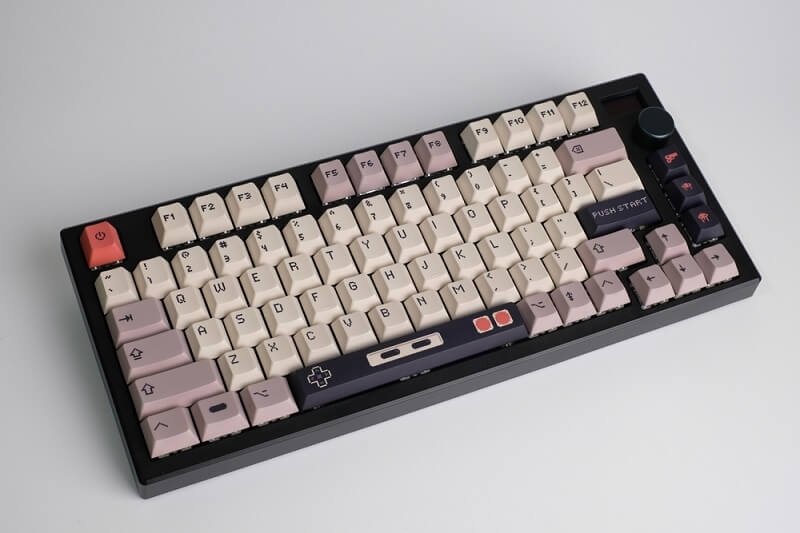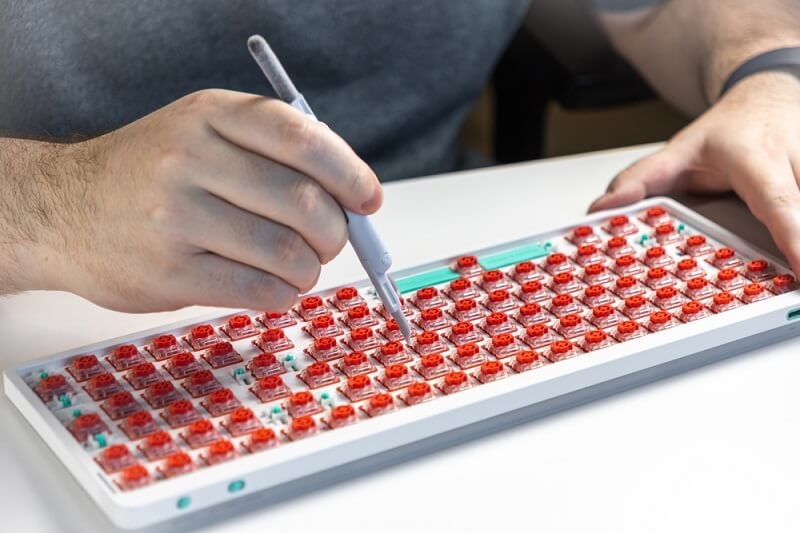
Typing on glass is fine until your thumbs revolt. A good mechanical board fixes that in one satisfying click. Or thock. This guide keeps things simple: how switches feel, which layouts make sense, and how to pick parts without falling into a rabbit hole. We will balance detail with real world picks, so you can buy once and smile every day.
First, the big idea: a switch is the little engine under each key. Its design sets sound, feel, and force. We will compare common switch types in human terms, not laboratory graphs. Then we will map layouts, from compact 60 percent boards to full size with the number pad. Lighting, software, spare parts, and build basics come next. If a term sounds fuzzy, do not worry. The goal is confidence, not jargon.
Hands win. Charts help, but your fingers decide. Start by asking how you actually type. Heavy hands like firm springs and clear feedback. Light touch prefers soft travel and minimal bump. Gamers often split the difference for speed. For pure writing, look for switches with a gentle bump and stable stems. That balance improves typing comfort and keeps long sessions easy on wrists and shoulders.
Try friends’ boards or a tester pack. Ten minutes of real use beats hours of reading. Your ears matter too. A lively desk at home might welcome bright clicks. An open office might demand quiet caps and dampers to protect everyone’s sanity.
Linear switches: smooth down, smooth up. No bump, no click. Good for fast gaming and low fatigue. Tactile switches: a small bump tells you the key has actuated. Many writers love the rhythm. Clicky switches: tactile plus an audible click. Fun if your space allows it. Those are the main switch types. Within each family, spring weights and materials shift the feel from feather to firm.
Caps change things more than people expect. Thicker caps sound deeper. Sculpted profiles can guide your fingers home. Stabilizers under long keys need a tiny dab of lube so they stop rattling and start feeling premium.
Sixty percent is tiny and travel friendly. No arrows, no function row. Great for small desks. Seventy five percent adds arrows and a slim function row without much bulk. Tenkeyless drops the number pad but keeps navigation keys, a sweet spot for many. Full size gives you every key, perfect for spreadsheets and finance. Pick the smallest board that does not slow your work. That choice often leads to the best keyboards for your routine, not someone else’s showcase.
Hot swap sockets let you change switches later without soldering. Magnetic gasket mounts soften the feel. Both are nice to have, not mandatory. The best keyboards for most people are simple, reliable, and easy to clean.
A backlit keyboard is great for early mornings and late nights. Software should be clear and light. If you choose wireless, check battery life with lights on and off. Wired still wins for zero fuss.
If you hate software, pick boards that store layers in hardware so your macros travel when you plug into another machine.
Most of us do a bit of everything. Emails, code, edits, a match or two. That is why middle weight tactiles are popular. They offer feedback for writing and decent speed for games. Esports folks still like light linears for tap precision. If you swap roles daily, keep two switch sets and hot swap when you need a different mood. Either way, your board can be a fine gaming keyboard without neon thunder or fragile frames.
Do not forget the desk. A soft mat quiets sound and protects the finish. Small tweaks stack into comfort and keep your setup tidy.
You do not need to spend a fortune. Solid entry boards exist. Look for metal top plates, south facing LEDs for wider cap support, and firmware that gets updates. Buy switches by the sample at first, then commit. Spend on switches and caps, not only on shells.
Desks, mats, caps, and case material shape sound. Aluminum cases are bright; polycarbonate warms the tone. Foam lowers harsh notes. Lube on stabilizers removes ticks. Stand up and listen from a few feet away. If the board makes you grin, you are done. If neighbors complain, add foam under the case and thicker PBT caps. Those two changes fix most noise with minimal effort.

Dust is the enemy. Pop keycaps once a month, blow debris away, and wipe the surface. If keys wobble, reseat stabilizers gently. If a switch feels scratchy, swap it or add a touch of lube. Keep a tiny pouch with a puller, a brush, alcohol wipes, and spare caps. Ten minutes every few weeks keeps a daily driver feeling new.
Here is a simple flow. Pick size by desk space and tasks. Choose a switch family by feel. Decide on wired or wireless. Add lighting only if it helps. Confirm hot swap if you want flexibility. Test fits protect typing comfort over long sessions. When in doubt, try a tester, ask a friend, or visit a local meetup. You will learn faster in five minutes than in fifty reviews.
Writer who types all day: compact tenkeyless, medium weight tactiles, PBT caps, gentle backlit keyboard glow. Hardware layers saved.
Developer who toggles windows and shortcuts: seventy five percent layout, crisp tactiles, knob for volume, and macro rows mapped by color.
Student who moves a lot: sixty percent wireless, light linears for silent dorm nights, long battery life. Toss in a pouch with a cable and spare caps.
Hybrid office and home: hot swap board with two switch sets, one quiet tactile for meetings, one lively linear for late sessions.
Casual player who wants plug and play: sturdy tenkeyless, responsive linears, good feet grip, and smart media keys. No fuss, just fun on a weekend gaming keyboard session.
Check return policies and switch compatibility. Read one community review to spot surprises. Order a tester if you are torn between two feels. Keep your old board until the new one proves itself for a week. Small patience now prevents big regrets later.
Test on your desk before deciding wisely.
Most of all, enjoy the process. Your keyboard is the tool you touch more than any other. When it fits your hands, your day simply feels better. That is the point of this whole mechanical keyboard guide after all: simple choices, clear wins, and a desk you look forward to using.
This content was created by AI